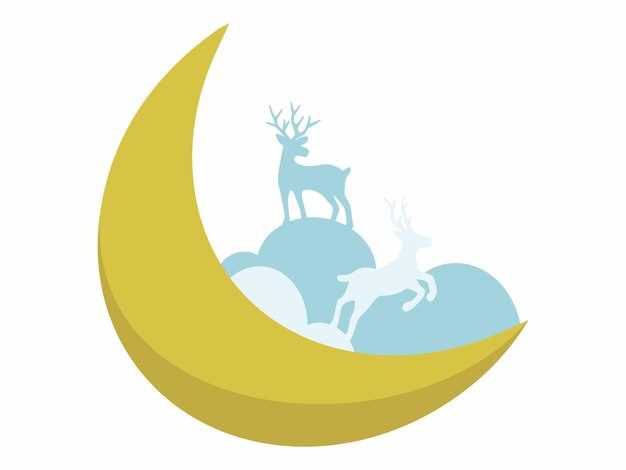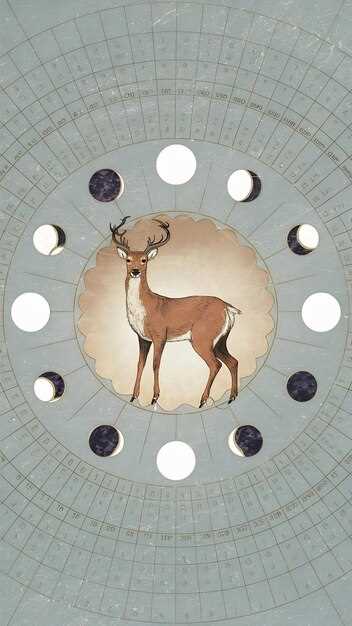
The relationship between lunar cycles and wildlife behavior has long intrigued researchers and outdoor enthusiasts alike. Among various species, deer exhibit distinct movement patterns that can be heavily influenced by the phases of the moon. Understanding these patterns is crucial for hunters, wildlife managers, and ecologists as it can significantly impact deer population dynamics and habitat utilization.
The lunar cycle plays a fundamental role in shaping the daily and seasonal activities of deer. As moon phases transition from new to full, alterations in natural light can affect the timing and frequency of deer movements. This heightened visibility influences not only their feeding behaviors but also their mating habits and predator avoidance strategies. Researchers have sought to identify correlations between specific lunar phases and increased deer activity, revealing a complex interplay between celestial mechanics and animal behavior.
The behavior of deer during different moon phases highlights their adaptability and instinctual responses to environmental cues. For instance, studies suggest that deer are more likely to be active during twilight hours when the moon is full, as the increased illumination allows for safer foraging opportunities. This understanding of how lunar light impacts deer movement can provide valuable insights for conservation efforts and hunting strategies alike.
How New Moon Influences Deer Activity Levels

The new moon phase plays a significant role in influencing deer behavior and activity levels. During this time, the lack of moonlight creates darker nights, which affects how and when deer move in their natural habitat.
Research indicates that during the new moon, deer tend to exhibit heightened levels of activity, particularly during dawn and dusk. Factors contributing to this increased movement include:
- Reduced Light Exposure: With minimal moonlight, deer feel more secure when foraging, allowing them to venture out of their hiding spots.
- Predator Avoidance: The darkness provides a strategic advantage, reducing the likelihood of encounters with predators, prompting deer to be more active.
- Feeding Patterns: Increased dark hours may encourage greater foraging behavior, especially as deer seek food sources before the next moon phase brings more light.
The cycle of the moon directly impacts not only how much deer move but also their overall behavior. During the new moon:
- Deer are more likely to cover larger distances in search of food.
- Increased social interactions may occur as deer gather in larger groups, facilitating reproductive behaviors.
- Deer display heightened alertness due to the absence of disruptive light, enhancing their ability to detect potential threats.
Understanding how the new moon influences deer activity levels is essential for hunters and wildlife enthusiasts, as it allows for better planning of activities aligned with natural deer behaviors. By recognizing the patterns related to the lunar cycle, individuals can enhance their chances of encountering deer while respecting their natural rhythms.
Comparative Analysis of Full Moon Effects on Feeding Behavior
The moon cycle plays a crucial role in determining the feeding behavior of deer. Particularly, the full moon is often cited as a period of heightened activity for these animals. Research indicates that the increased luminosity during this phase affects the behavior of deer, influencing their foraging patterns and feeding times.
During a full moon, deer exhibit a tendency to feed more actively during the night compared to the days surrounding this phase. The natural light provided by the full moon allows them to navigate their surroundings more effectively, increasing their confidence in venturing out for food. This shift in behavior can be particularly noted in areas where hunting pressure is present, as deer become more cautious and change their feeding habits to adapt.
Comparative studies show that in the days leading up to and following a full moon, deer are observed to adjust their feeding periods. While some researchers argue that feeding peaks occur just before the full moon, others note a significant increase during the night of the full moon itself. This variability suggests that the full moon’s impact on deer feeding behavior may depend on environmental factors such as predator presence and habitat structure.
In addition to direct feeding behaviors, the full moon also appears to influence social interactions among deer. Increased visibility at night can lead to more frequent gatherings, affecting the overall dynamics of deer populations. As these animals adapt their cycle of activity to capitalize on the moon’s brightness, understanding these patterns becomes crucial for effective wildlife management and hunting strategies.
In summary, the full moon significantly alters the feeding behavior of deer. By adapting to the changes in natural light, deer maximize their foraging efficiency while navigating the risks posed by predators. This comparative analysis underscores the importance of lunar phases in understanding wildlife behavior and ecology.
Best Hunting Dates Based on Moon Cycle and Deer Movement

The lunar cycle significantly influences the behavior of deer, affecting their movement patterns and feeding habits. Understanding how these changes correlate with moon phases can enhance hunting success. Typically, the moon goes through four primary phases: new moon, first quarter, full moon, and last quarter. Each phase brings distinct characteristics that can impact deer activity.
During the new moon, deer tend to be more active during daylight hours. The lack of moonlight creates a sense of security, encouraging deer to venture out to feed. This phase offers hunters an excellent opportunity to spot deer, especially in late afternoon or early evening.
The first quarter phase sees an increase in nocturnal activity as the moon becomes more visible. Deer may adjust their behavior, becoming more cautious during daylight. Hunters should focus on areas where deer transition from bedding to feeding zones, particularly early in the morning or late in the evening.
The full moon phase often leads to increased deer movement during the night. As the moonlight illuminates the landscape, deer may feel more secure to feed late into the night and rest longer during the day. To maximize hunting potential during this phase, it’s advisable to hunt during early morning hours when deer may be returning to their bedding areas.
Finally, during the last quarter, deer behavior tends to mirror that of the new moon phase. Again, hunters can benefit from increased daylight activity, making it a prime time to observe and track deer. Focusing efforts in the later afternoon can yield rewarding results.
Ultimately, aligning hunting dates with the moon cycle can enhance success rates. By paying attention to moon phases and adapting strategies accordingly, hunters can leverage the natural behaviors of deer to their advantage.



